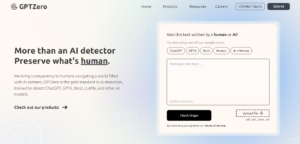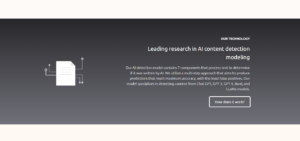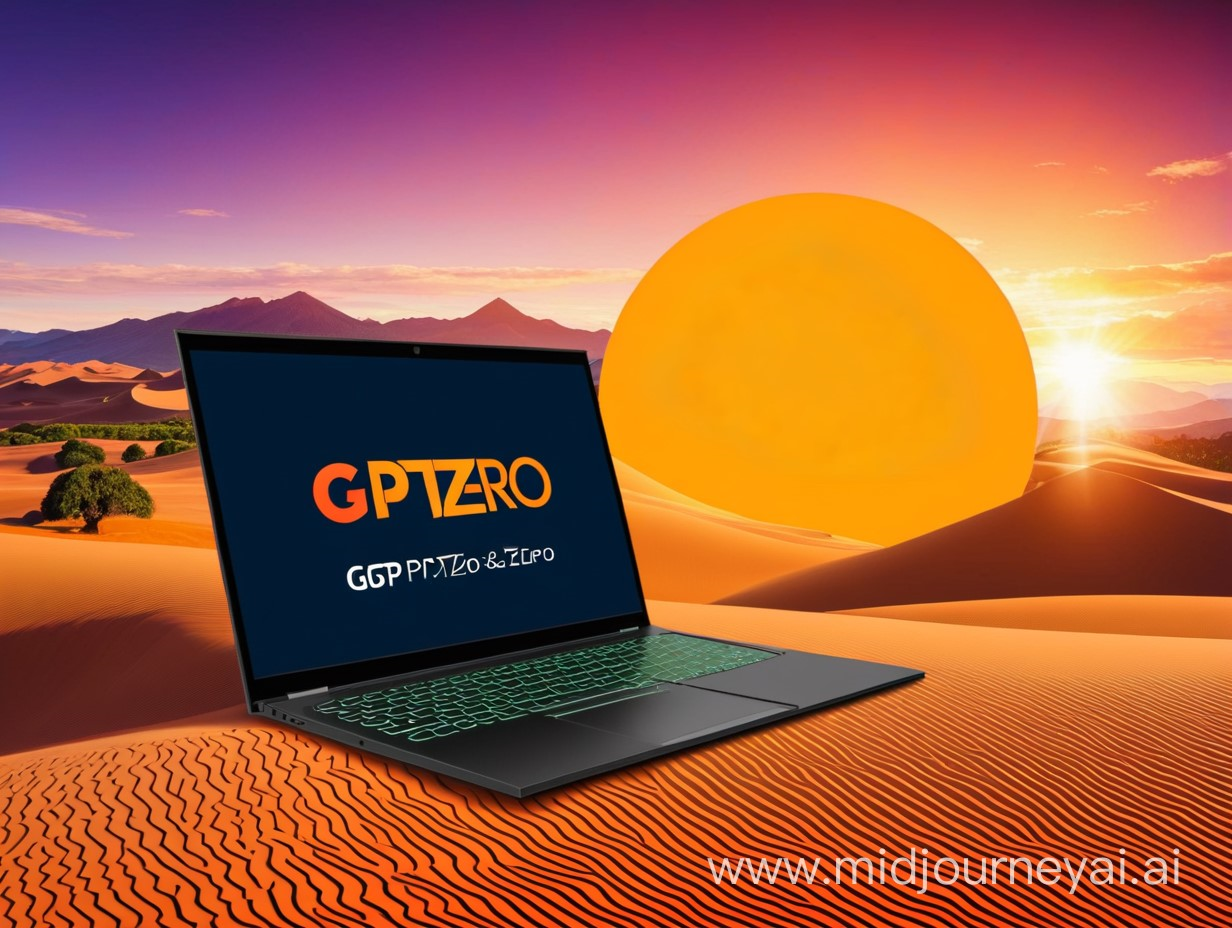We have seen major advancements in natural language processing in the constantly changing field of AI, which is continuing to change how we communicate with machines. Edward Tian, a student at Princeton University, developed GPTZero, an Artificial Intelligence content detection program. He created it with teachers & lecturers in mind after observing an increase in “AI plagiarism.”
What is AI Plagiarism?
AI plagiarism is when AI tools create content that’s the same as existing material without proper credit. Teachers and lecturers talk a lot about students using AI tools such as ChatGPT, for exams and assignments.
How GPTZero detects Plagiarism
Edward Tian claims that GPTZero, which evaluates texts according to their burstiness and perplexity and this is the answer to this issue. The term “perplexity” describes how random a text appears to a model or how well a text is liked by a language model. In contrast to variable human-written materials, while “burstiness” stands for the complexity of sentences.
While humans prefer to write in “bursts” and alter the length of their sentences, AI language models often follow a constant structure. Make a chart based on sentence variability, and it will show the difference clearly.
According to Edward Tian, human written articles “Will vary all over the place” and also go “up and down”. But writings produced by machines “will have constant baseline” and be “pretty boring” too.
Now let’s go further to reveal what GPTZero is, how it works, and the significant implications it has for the future.
What is GPTZero?

GPTZero is an artificial intelligence detection software developed to identify and analyse artificially generated text, specifically focusing on text produced by AI language models such as GPT-3.
GPTZero was designed to help maintain trust and accuracy in the education sector by trying to help distinguish between artificial intelligence and human-generated text. It uses perplexity and burstiness to determine if a passage was written by a bot.
primarily used to try and detect instances of AI written text. It is currently being further developed to assist educators. In October 2023, it was announced that GPTzero had partnered with the American Federation of Teachers.
Currently, GPTzero offers an AI text detection tool, and a Google Chrome extension called “Origin”, which watches the history and keystrokes made in a Google doc.
How does it Work?

At its core, GPTZero is an AI model that’s been trained to play detective.
It goes through the text, be it a sentence, a paragraph, or an entire document and predicts if a human or an AI wrote it. It is trained on a massive dataset of human-written and AI text that has never been published on the internet. It’s been taught to recognize the subtle differences in style, structure, and other linguistic features that distinguish human writing from AI content.
When GPTZero analyses a piece of text, it’s not just looking at the words. It’s examining the sentence structure, the flow of ideas, the use of vocabulary, and a whole lot more to pick up on the telltale signs of AI content masquerading as human-like text.
GPTZero use cases
Education:
Teachers can have free access to the detection tool’s pilot version on the GPTZero website. Edward Tian has cautioned teachers not to use the results of the test to determine if a student has cheated using artificial intelligence. According to him, there is “a false-positive rate of less than 2%” in the present model.
Organisations:
Companies may use GPTZero to include AI text recognition in their systems. It gives businesses access to an API, making it simple to integrate into their systems.
Maintaining Academics:
Academic institutions use it to protect academic integrity in the age of AI-generated material. It contributes to maintaining the integrity of academic papers and other text-based materials.
User Plans Provided by GPTZero:
GPTzero comes with 3 plans:
Free Plan
With this plan, you can access the GPTZero dashboard and the Origin chrome extension. Scan up to 10,000 words per month and 7 scans an hour. It includes-
- Up to 10,000 words per month.
- Premium AI detection models.
- Batch file scanning 10 files.
- Access to Origin Chrome Extension.
Essential Plan
It gives access to all essential AI detection features on the dashboard but does not include plagiarism scanning.
- Up to 150,000 words per month.
- Premium AI detection models.
- Batch file scanning 10 files.
- Access to Origin Chrome Extension.
Premium Plan
It is the most popular plan, recommended for individuals who want full access to all our features, including plagiarism scans.
- Up to 300,000 words per month
- Plagiarism scanning
- Premium AI detection models
- Unlimited batch file scanning
- Invite team members
How GPTZero Asesses articles
Here is how GPTZero processes your content:
Perplexity score:
As mentioned earlier, perplexity is a randomness metric. Which examines how good a language model (like ChatGPT) is at predicting the next words. Higher scores indicate unpredictability, implying that a text is human-made. Currently, GPTZero bases perplexity on the GPT-2 model.
Burstiness score:
This metric looks at the distribution of sentences and determines whether there is uniformity or pattern. It’s based on the idea that humans tend to mix short and long sentences when writing.
Highlighted AI-written portions:
GPTZero’s latest update includes phrase detection. So the app highlights which phrases are most likely AI-written (within a text). Furthermore, GPTZero will show you which sentence has the highest perplexity score.
Through API integrations:
The creator made GPTZero’s API readily available for anyone who wants to integrate it into their systems. You can also request customization support from the app’s engineers via email.
Conclusion
GPTZero is a free and decent tool for catching AI plagiarism. But it has a long way to go to catch up with competitors and, it is important to note that GPTZero is still in beta mode.
As the Princeton team continues to work on the app, we can expect its accuracy and features to improve. And GPTZero’s metrics provide a decent starting point for teachers looking to detect AI plagiarism in the meantime.
